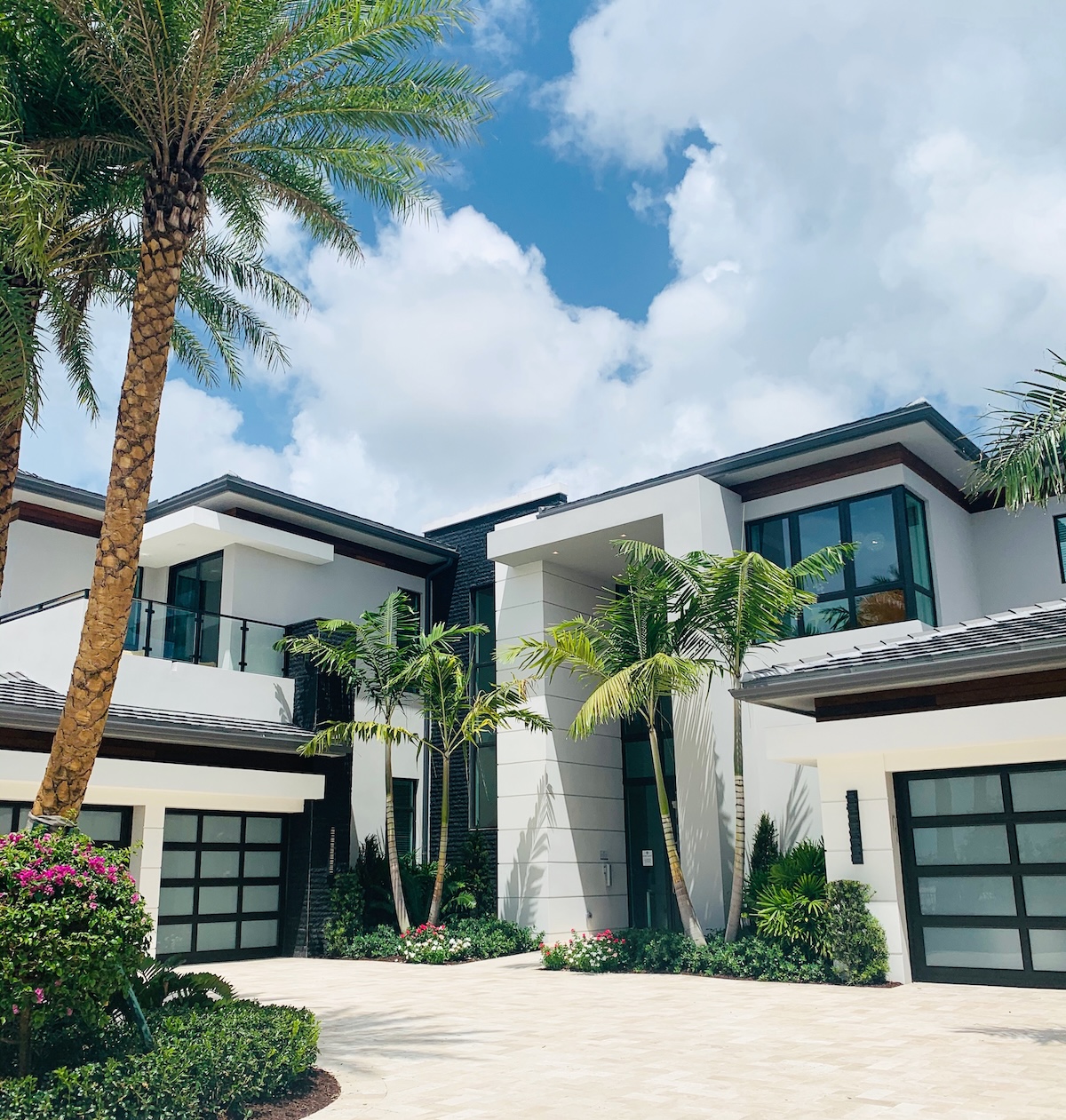Building a custom home is an adventure that lets you tailor every corner of your living space to your own style and needs. Imagine the perfect lot, your ideal floor plan, and all the little personal touches that make a house a home.
But before you dive into selecting paint colors and light fixtures, there’s a roadmap you’ll want to follow to help you every step of your home-building process is as seamless as possible.

Table of Contents
ToggleOverview
Starting with the purchase of land and moving through the intricacies of financing, designing, and constructing, a custom home build involves a series of critical steps.
Considerations such as securing title insurance, conducting soil tests, and calculating material costs are foundational to setting your project on the right track.
Furthermore, enlisting the right professionals like architects, contractors, and interior designers can transform an overwhelming batch of decisions into an exhilarating creation process.
As you move forward, you’ll navigate through essentials such as creating a functional floor plan and selecting style elements that resonate with your lifestyle.
Whether it’s hiding outlets to maintain a sleek kitchen backsplash or picking out the extras that give your home character, every decision paves the way for a space that’s uniquely yours.
With a thoughtful approach and a comprehensive checklist, your vision for a dream home can take shape, one step at a time.
Initial Planning and Preparation

Before you embark on the journey of building your custom home, it’s essential to get your vision on paper, determine your budget, and assemble the right team.
The early stages set the foundation for a successful build, so let’s walk through the initial steps of transforming your dreams into a concrete plan.
Understanding the Custom Home Building Process
Building a custom home is a multi-step journey that starts long before the first nail is hammered. Begin by outlining a custom home building checklist to navigate the process systematically.
This checklist should reflect your vision and style preferences, balanced with practical considerations like budget and needs versus wants.
Using this checklist will help you track each phase of construction and ensure nothing vital to your dream home is overlooked.
Selecting a Location
Finding the perfect location is about more than just a beautiful view. Consider the property’s topography, including slopes and natural features like trees, which may affect construction.
Look into zoning restrictions and think about the neighborhood’s attributes, such as school district, privacy, and accessibility. Don’t forget to check if the land will permit your desired design.
A savvy real estate agent can be invaluable in weighing these factors to find a site that matches your dreams.
Assembling Your Building Team
Your team will be the cornerstone of turning your plan into reality. It should typically include an architect, builder, or general contractor, and could extend to an interior designer and landscape architect.
When selecting these key players, ensure they align with your vision and possess a positive track record. Confirm their credentials and past work, seek out references, and establish a communication rhythm.
Their expertise is critical in navigating the custom home building and design intricacies, from understanding your credit report for a down payment to the final touches of construction.
Designing Your Dream Custom Home

Before diving into the nitty-gritty, understand that your home’s design should reflect your personal style while being functional for your day-to-day life.
From sunlight orientation to accessibility features, every aspect requires careful consideration to match your vision and needs.
Crafting the Floor Plan
When dreaming up your floor plan, think about size, layout, and how each room will flow into the next.
- Size & Layout:
- Bedrooms: Decide the number and size. Consider extra space for guests or future family expansion.
- Bathrooms: Determine the number of full and half baths, considering the convenience for everyday living and entertaining.
- Kitchen: Envision the kitchen layout, including the location of appliances, cabinets, and whether you want an island or breakfast nook.
- Special Features: Would a walk-in pantry or a dedicated laundry room make your life easier?
- Accessibility: If you have any mobility needs, incorporate wider doorways and consider a bedroom on the lower floor.
Consider the elements that will affect the feel and functionality of your home:
- Sunlight Orientation: Position living spaces to benefit from natural light, warmth, and views while optimizing energy efficiency.
- Feng Shui: If harmony and flow are important to you, incorporate Feng Shui principles into your layout.
Consider these areas to make your plan complete:
- Storage: Ample storage in kitchens, garages, and closets.
- Garage: The size and additional storage or workspace.
- Doors & Windows: Placement for views, light, and air circulation.
Choosing Your Aesthetic
Your home should be a reflection of your style, filled with the colors, textures, and features that bring you joy.
- Interior Design Elements:
- Color Palette: Choose paint colors and accents that create the desired mood in each space.
- Flooring: Consider durability, comfort, and the style of flooring, from hardwoods to carpets.
- Lighting: Plan for a mix of ambient, task, and accent lighting.

Work with these details to tailor your space:
- Trim & Baseboards: Select the style and size that frame the rooms to your taste.
- Built-ins: Custom shelves or entertainment centers can add character and functionality.
- Fireplace: Decide if you want a cozy hearth as a focal point in your living space.
- Custom Features: Think about unique touches like window seats or a wine cellar for personalized flair.
When considering the interior, think about hiring an interior designer if matching decor to your custom features feels overwhelming.
Their expertise can guide you in selecting everything from paint colors and carpeting to decorative trim and baseboards for a cohesive, stylish home that’s all you.
Construction Phase

When your custom home transitions from blueprints to building, you’ll enter the construction phase. This is when things get real, with tangible progress as your house begins to take shape from foundation to finishes.
The Building Milestones
- Framing and Structure: First up is the skeleton of your home. Picture the wood or metal framing going up, outlining each wall, floor, and the roof. This is also when your home’s shape becomes apparent.
- Roofing: Once the frame is up, roofing follows. It’s pretty cool to see your house beginning to look more like the place you’ll eventually call home.
- Plumbing, Electrical, and HVAC: Before the walls are closed up, all your pipes and wires need to be run. This is critical as redoing this later is not something you want.
- Inspections: Now, don’t forget about the checks and balances. Local authorities will need to inspect and give the go-ahead on aspects like framing, electrical, and plumbing.
Interior Finishing Touches
- Drywall: It’s time for your rooms to start looking like actual rooms. The installation of drywall will define indoor spaces clearly.
- Flooring: Whether it’s tile, hardwood, or carpet, the floors go in next. This choice will dramatically influence the vibe of your space.
- Cabinets and Built-Ins: Kitchen, bathroom cabinets, and any custom shelving are installed – quite the transformation!
- Trim and Paint: This stage deals with the details – baseboards, window trims, and a fresh coat of paint that sets the mood for each room.
- Lighting, Outlets, and Switches: Lights, power, action! This is when your home starts to brighten up, quite literally, and gets ready for tech and appliances.
- Appliances, Hooks, etc.: All those appliances you chose—fridge to the oven—get moved in. This is also when minor details like hooks and towel bars are attached.
This building stage wraps up with cleanup and the final walkthrough, where you check out everything and make sure it’s just the way you want before you move in. It’s almost time to break out the bubbly and celebrate your new home!
Final Steps to Your New Home

Before handing over the keys, there’s a bit more than just packing boxes. From final touches on your garden to the last inspection, these are the moments you’ll see your new home come to full fruition.
Landscape and Exterior Details
After the interior of your house is squared away, your attention will shift to the outside. You’ll work with a landscape architect or a team to bring your outdoor vision to life.
Together, you’ll pick the perfect plants for your garden, decide on a driveway design that complements your home, and perhaps even plan for a pool or deck. It’s your last chance to make sure every outdoor detail aligns with your dream home’s vision.
- Landscaping: Choose plants, grass, and trees that enhance curb appeal and suit your climate.
- Driveway & Walkways: Finalize materials and layout for durable and aesthetically pleasing access.
- Exterior Amenities: Install any decks, pools, or other features for leisure and activities.
Wrap-Up and Move-In
Your custom home builder and building team are finishing up. Now’s the time for a thorough clean-up and to prep for the big move. Ensure all utilities are set up and check if your insurance policies are in place. During the final walk-through, take your time to inspect each room, test all fixtures, and confirm that every finish is to your satisfaction.
Address any concerns before the closing. Once you’re officially handed the keys, it’s time to move into your new abode and start making memories.
- Final Inspection: Conduct thorough checks with your builder; don’t overlook even minor issues.
- Utilities & Insurance: Confirm all services are active, and you’re fully insured from day one.
- Closing: Review and sign all necessary paperwork with your real estate agent or representative.
- Move-In: Coordinate with movers for a smooth transition into your new, custom-built home.


